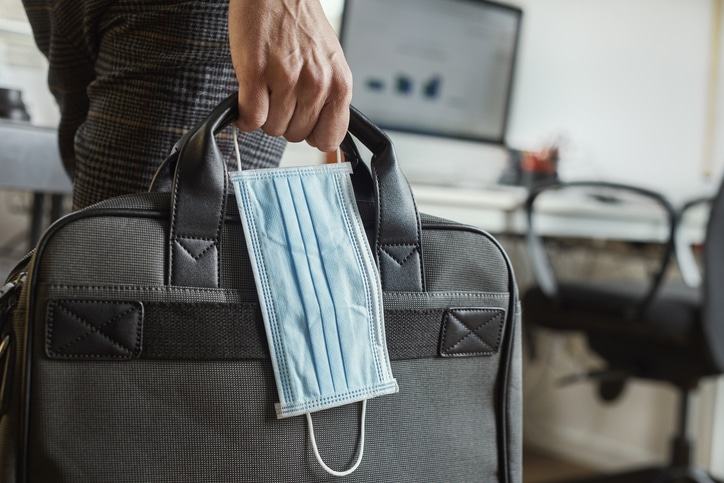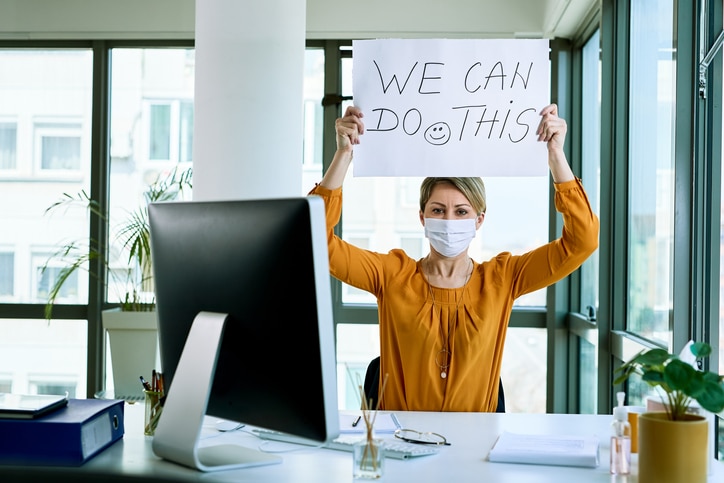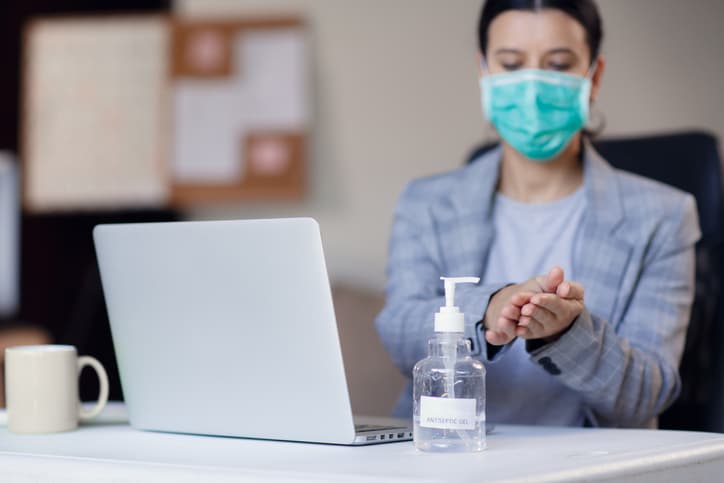From retail stores and restaurants to digital marketing agencies and insurance firms, most businesses are going to face different challenges when it comes to bringing employees back to work once the lockdown restrictions have been eased. COVID-19 has changed the way that business is being conducted all around the world.
Some companies have had to temporarily close down, whereas a lot of businesses have moved their daily efforts to home environments. Once we return to work, we’re not going to be able to do so in the same way as we did before.
The decision to return to work is one that isn’t going to come without risk. For some industries, testing is going to be required in order for employees to get back into the workplace. For others, they have already welcomed employees back with strict social distancing protocols in place.
Some industries seem to still be quite some time away from their resumption, for example, the entertainment sector. No matter what sector your company operates in, it is important to consider how you are going to bring employees back into the workplace.
What sort of policies and procedures will you need to put in place? An effective plan is a must. You can’t simply trial different things and see how it goes. You need to strategize.
There is no one-size-fits-all solution

One important thing to recognize when it comes to planning for bringing employees back to work is that there is not going to be a one-size-fits-all solution.
Protocols are going to need specific to each employer, with various factors to be considered. This includes the workforce, the nature of the work that is being conducted, and the applicable industry. Plus, employers will need to refer to federal guidelines, such as CDC and OSHA requirements, as well as the growing number of local and state requirements that are being introduced.
Below, we are going to help you look into the different areas you are going to need to consider. Nevertheless, this is by no means an exhaustive list, and you can make decisions that are specific to your workforce and the industry that you are operating in.
In addition to protocols, it is important that you use incentives and team building to help motivate your team while easing back into the workplace. To get a few ideas for fun incentives, click below! Some incentives will need to be planned in the future and others like going to a conference can be replaced with online education courses and webinars.
Developing a plan to bring employees back to work
You need to figure out when employees should be returned to work. Would it be better to have some form of a phased return? Also, you need to figure out how employees are going to be notified, and how much notice you are going to provide.
If you have a small company, it may help to give everyone a personal call. Also, you need to consider the fact that employees talk. So, if you only inform a few people, it could cause unnecessary worry for others.
Make sure you carefully think about how employees are going to be notified about returning to work. You also need to think about the employees that you may recently have laid off, as well as those that have been furloughed.
You are going to need to think about what individual jobs are going to look like when your employees do come back. For example, will there be any changes in their duties? You may also determine that you need employees to return on a part-time basis, with the aim of them moving to full-time again in due course.
Needless to say, safety is going to be the primary concern. Are your employees going to be safe to return to the workplace? There are different factors to consider here. Will you need workers to be tested in order to enter the workplace? Perhaps you’re going to advise that employees take their temperature every morning before determining whether they can enter the work environment?
You also need to figure out what protocol you are going to have in place for employees that could have been exposed to the virus or have already tested positive. How will you determine when they are going to be allowed back into the workplace?
There are then the logistical challenges that need to be at top of mind as well. You may have workers who are scared to return to work. There are other re-integration logistics that need to be thought about as well. These include:
- The distribution of any legally required notices
- Updating HRIS and payroll systems
- Reimbursing any necessary or reasonable business costs incurred during the closure
- Returning all employer confidential information
- The return and inventory of all employer-owned or leased equipment
Developing employee communication plans
It is a worrying time for everyone, and so it certainly helps to make sure that communication is on point at your business. You should make sure that you update all policies relating to COVID-19. This includes safety-related policies, social distancing protocols, travel policies, and paid sick/paid leave.
Implementing social distancing
You will also need to put in a plan for social distancing so that the workplace is safe. This plan is going to need to be specifically tailored to your workforce and the sector your work in. You also need to take into account the local, state, and federal guidelines and mandates. You may need to include some or all of the following when putting together your social distancing plan:
- Implementing part-time or full-time work-from-home arrangements for positions where it is possible for employees to work from home. This could be working from home all week or a certain number of days per week.
- Reconfiguring work schedules and/or limiting shifts so that only a few workers are physically present within the plant, facility, office, or other work location at the one time.
- Redesigning production lines so that there is more space between employees.
- Installing physical barriers in common areas, for example, in the lunchroom areas or using dividers between cubicles.
- Repurposing communal spaces, such as lunchrooms and conference rooms, so that there is more distance.
- Making changes to open workspace configuration.
Additional health and safety protocols in the workplace

There are a number of other steps that you can take in order to make sure that your workplace is as safe as possible. Again, this is going to depend on your workplace. Nevertheless, some options include periodic deep cleaning of the work location and handwashing protocols.
Other solutions include personal protective equipment and other safety equipment, for example, disposable disinfectant wipes, gloves, and employer-provided face masks. You should also develop an action plan should any of your workforce test positive.
Other options include periodic COVID-19 testing when it is available and implementing daily temperature checks.
Also, think about what protocols are going to be in place when visitors come to your premises. You need to consider how social distance, health and safety, and other protocols are going to apply when it comes to staffing agency workers, delivery workers, contractors, customers, and vendors when they are in the workplace.
What is your ‘new normal’ going to look like?
You are probably sick of hearing the phrase the ‘new normal’ but, unfortunately, we’re going to have to mention it! After all, it is unlikely that things are going to return to how they once were before the pandemic. There are going to be differences in the work environment that are going to be in place long-term. You need to think about how your workplace is going to keep moving forward.
For example, employees are going to have increased expectations for flexibility in terms of working hours and location. There will be considerable changes to a lot of companies, with many moving to flexible and remote work.
There will also be an increased focus on a contact-free economy and workplace. Following changes to the workplace and economy, there is also going to be the need for the redeployment of workers and reskilling in certain areas. You will probably notice that there is a desire for change and different benefits, including wellness and health benefits.
All in all, there is no denying that bringing employees back to work is something that a lot of employers all around the world are considering at the moment.
At MTI Events, we understand that the situation right now is delicate and hopefully the advice that has been provided here will help you to put together an effective plan for your workforce.
If you are interested in learning more about our team and what we do to help businesses support and reward their employees, click below.















